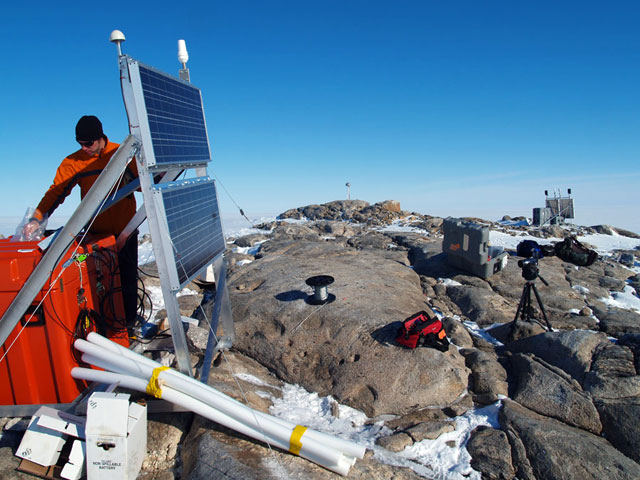|
Fire and icePOLENET instruments detect subglacial active volcano in West AntarcticaPosted November 29, 2013
Scientists funded by the National Science Foundation (NSF) Previous studies using aerial radar and magnetic data detected the presence of subglacial volcanoes in West Antarctica, but without visible eruptions or seismic instruments recording data, the activity status of those systems ranged from extinct to unknown. However, as Amanda Lough "This [study] is saying that we have seismicity, which means [this system] is active right now," Lough said. "This is saying that the magmatic chamber is still alive; that there is magma that is moving around in the crust." Lough published her discovery this month in Nature Geoscience along with her advisor Douglas Wiens The characteristics of the seismic events, including the 25- to 40-kilometer depth at which they occurred, the low frequency of the seismic waves, and the swarm-like behavior rule out glacial and tectonic sources, but are typical of deep long-period earthquakes. Deep long-period earthquakes indicate active magma moving within the Earth's crust and are most often associated with volcanic activity. The two swarms of seismic activity were detected by instruments deployed to obtain data on the behavior of the WAIS as part of the NSF-funded POLENET See complete NSF press release here |



For USAP Participants |
For The Public |
For Researchers and EducatorsContact UsU.S. National Science FoundationOffice of Polar Programs Geosciences Directorate 2415 Eisenhower Avenue, Suite W7100 Alexandria, VA 22314 Sign up for the NSF Office of Polar Programs newsletter and events. Feedback Form |


